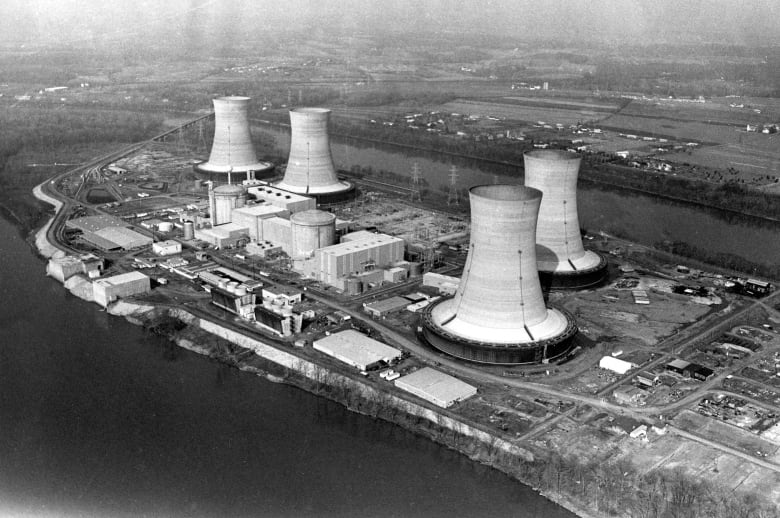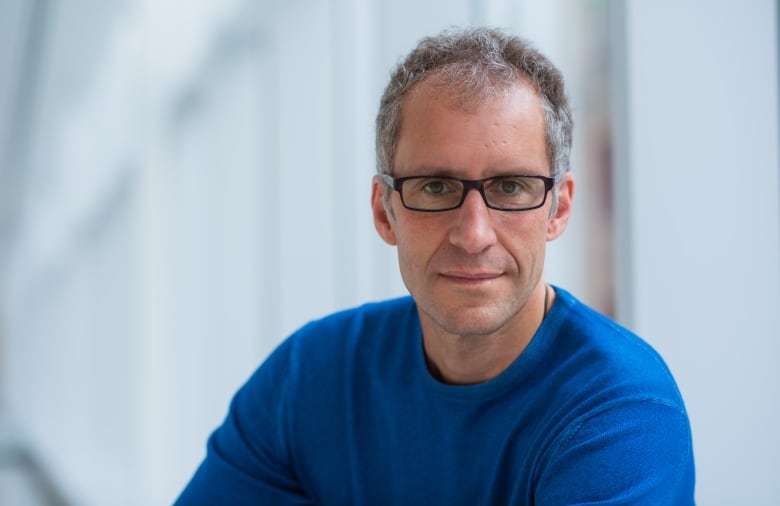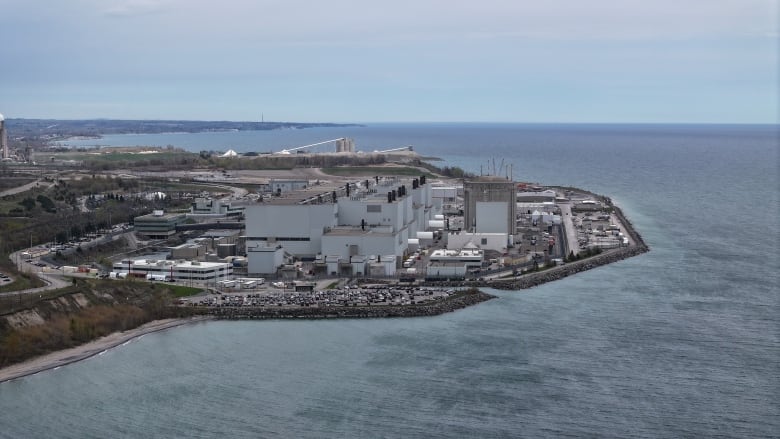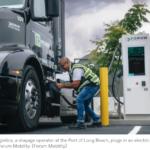Current24:10AI needs a lot of power. So Google is going nuclear
Big tech companies are scrambling to secure multi-billion-dollar nuclear power deals in order to meet growing demands for generative artificial intelligence (AI) — but critics say they need to rethink that and slow down.
“Tech companies have gotten away with a lot just because it’s a new field,” said Sasha Lucioni, an AI researcher and head of climate at New York-based AI developer HuggingFace. Current Guest host Peter Armstrong.
The approach tends to be “move fast and break things.” Startups and Silicon Valley. So my concern is transferring this approach to nuclear energy, because nuclear energy is something that should involve a lot of attention.
In September, Microsoft announced its plans to purchase power from the Three Mile Island plant in Pennsylvania, where the worst nuclear accident in US history occurred in 1979. The site closed its remaining operating unit in 2019 But she plans to reopen this project.
Last week, Google announced a deal with nuclear energy startup Kairos Power, purchasing 500 megawatts of electricity from seven small modular reactors (SMRs) that have not yet been built. Just a few days ago, Amazon struck a similar deal with startup X-Energy.

Small modular reactors It is considered safer Compared to conventional nuclear plants due to their small size and energy production, according to supporters of this technology. They are also touted as being cheaper and faster to build, which would ideally provide tech companies with a source of renewable energy – in Google’s case, as early as 2030.
Companies are racing toward nuclear power because they are using significantly more energy now, due to the rising use of generative AI. both of them Microsoft and Google failed to meet their 2024 net-zero emissions goals – First, because these companies tend to set goals that they can achieve, according to Lucioni.
“This year they say, ‘Oh, oops, AI surprised us,’” she said.
Some see Microsoft, Google, and Amazon’s investments in nuclear energy as a positive step toward reducing the emissions of major technology companies.
“I think all of this is good for the environment,” said Jacopo Bongiorno, professor of nuclear science and engineering and director of MIT’s Center for Advanced Nuclear Power Systems.
How much energy does generative AI use?
Generative AI can generate text or multimedia such as images, music or video based on a user’s request for a dinner recipe or something more technical, such as a letter offering a house to win a bidding war.
The systems are trained on large sets of data and are programmed with specific rules and algorithms, so with each request, the AI identifies patterns in order to provide an answer.
“They try to stick that into anything that moves, anything that the customer can interact with,” Lucioni said of the big tech companies.

says Lucioni, who has researched the environmental costs of artificial intelligence and is… He is currently developing a classification system for technology.
put another way, The ChatGPT query uses as much electricity as a light bulb needs to last 20 minutesaccording to what one researcher reported to NPR.
Lucioni says companies should be mandated to release how much energy their AI technology uses, and let users choose not to use it.
Once more information is available about energy use in generative AI, she says governments will be able to develop regulation around its use.
“We must reduce demand,” she said.
Instead, as demand rises, technology companies are investing in nuclear power and building more AI data centers, which are huge warehouses filled with servers, routers and cooling systems that power the AI.
“There will be a few years where demand will outstrip any type of renewable energy supply,” Lucioni said.
“The Ideal Energy Source”: Professor of Nuclear Energy
Tech companies have been actively searching To source renewable energy to sustain the rapid growth of generative AI. In 2023, Google created Geothermal energy project In Nevada to operate nearby data centers. Amazon recently became the largest buyer of solar and wind energy in the world.
“Using nuclear reactors is very similar to the ideal energy source,” Bongiorno said. “This is because nuclear reactors produce electricity 24 hours a day, 7 days a week.”
Bongiorno believes it is “quite realistic” for nuclear power to operate continuously, without carbon emissions. He says the small modular reactors the companies will use produce less power than larger reactors currently on the grid, but are reliable enough to power data centers that perform artificial intelligence calculations.

Comparatively, wind and solar power need to be supported by battery energy storage, Bongiorno said, and this will increase the cost and land use associated with power generation.
“Building a new nuclear plant is expensive. The good news is that once it’s built and amortized, the marginal cost of operation and maintenance plus fuel is actually very low and predictable over decades.”
As for concerns about radiation from small and medium-sized reactors, Bongiono says he has “almost none,” given their smaller size and power output compared to conventional nuclear power plants.
They also have “passive security systems,” according to one supporter of Canada’s investment in SMEs.
“If things get bad, there’s no need for human intervention, things just stop. That’s probably one of the biggest differences.” Romina Velshi, former president and CEO of the Canadian Nuclear Safety Commission, told CBC Edmonton AM Earlier this month.

The reactor at Three Mile Island is expected to be restarted by 2028, pending approval from the US Nuclear Regulatory Commission. Google’s deal with Kairos Power expects the first SMR to be ready by 2030, while Amazon and X-Energy plan for 2039.
However, the first SMR project in North America is currently under construction, operated by Ontario Power Generation (OPG). At the Darlington plant in Clarington, Ontario. It is expected to be the first system in North America to come online and is scheduled to be operational by 2029.
“If the investment is there, the need is there, the demand is there, it’s absolutely possible,” Bongiorno said.




